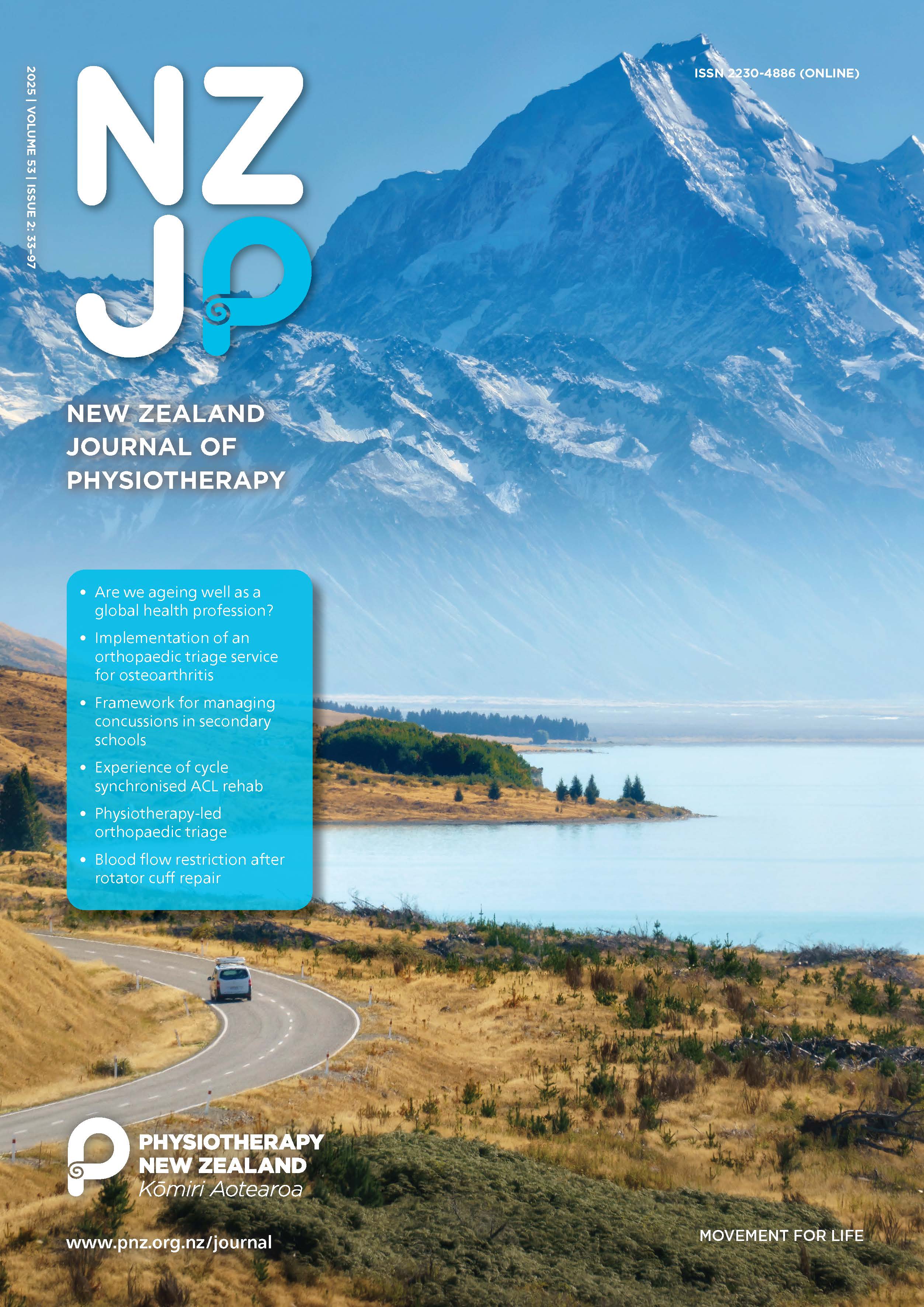Comparative effectiveness of blood flow restriction therapy versus exercise alone after arthroscopic rotator cuff repair: S-TRONGER randomised controlled trial protocol
DOI:
https://doi.org/10.15619/nzjp.v53i2.469Keywords:
Blood Flow Restriction Training, Clinical Trial, Exercise, Rotator Cuff Repair, Shoulder PainAbstract
The purpose of this trial is to evaluate the effect of postoperative exercises with blood flow restriction therapy (BFRT) for 12 weeks in patients undergoing arthroscopic rotator cuff repair, compared to postoperative exercises alone. Fifty-eight adults aged from 40 to 65 years with a confirmed diagnosis of symptomatic degenerative rotator cuff tear, and treated with an arthroscopic rotator cuff repair, will be recruited to participate in a randomised controlled trial with 1:1 randomisation. Participants will be stratified by sex (female and male) and site (three hospitals) to twice weekly, supervised postoperative exercises with BFRT or postoperative exercises alone for 12 weeks. The primary outcomes will be the changes in shoulder muscle strength and muscle mass through abduction and external rotation maximal voluntary isometric contraction and supraspinatus cross-sectional area, respectively. Secondary outcomes include active range of motion, pain intensity, upper limb disability, and quality of life. Between-group differences will be tested with a linear mixed-effects model. Outcomes will be measured at baseline, 4 weeks, and 12 weeks. This is the first randomised controlled trial investigating the clinical effects of BFRT in patients with a rotator cuff repair. The novel application of BFRT may be a suitable strategy to attenuate shoulder muscle atrophy and strength deficits in the early stages of postoperative rehabilitation after rotator cuff repair. The results of this trial will support researchers and clinicians in optimising the BFRT postoperative exercises in patients with rotator cuff repair.


